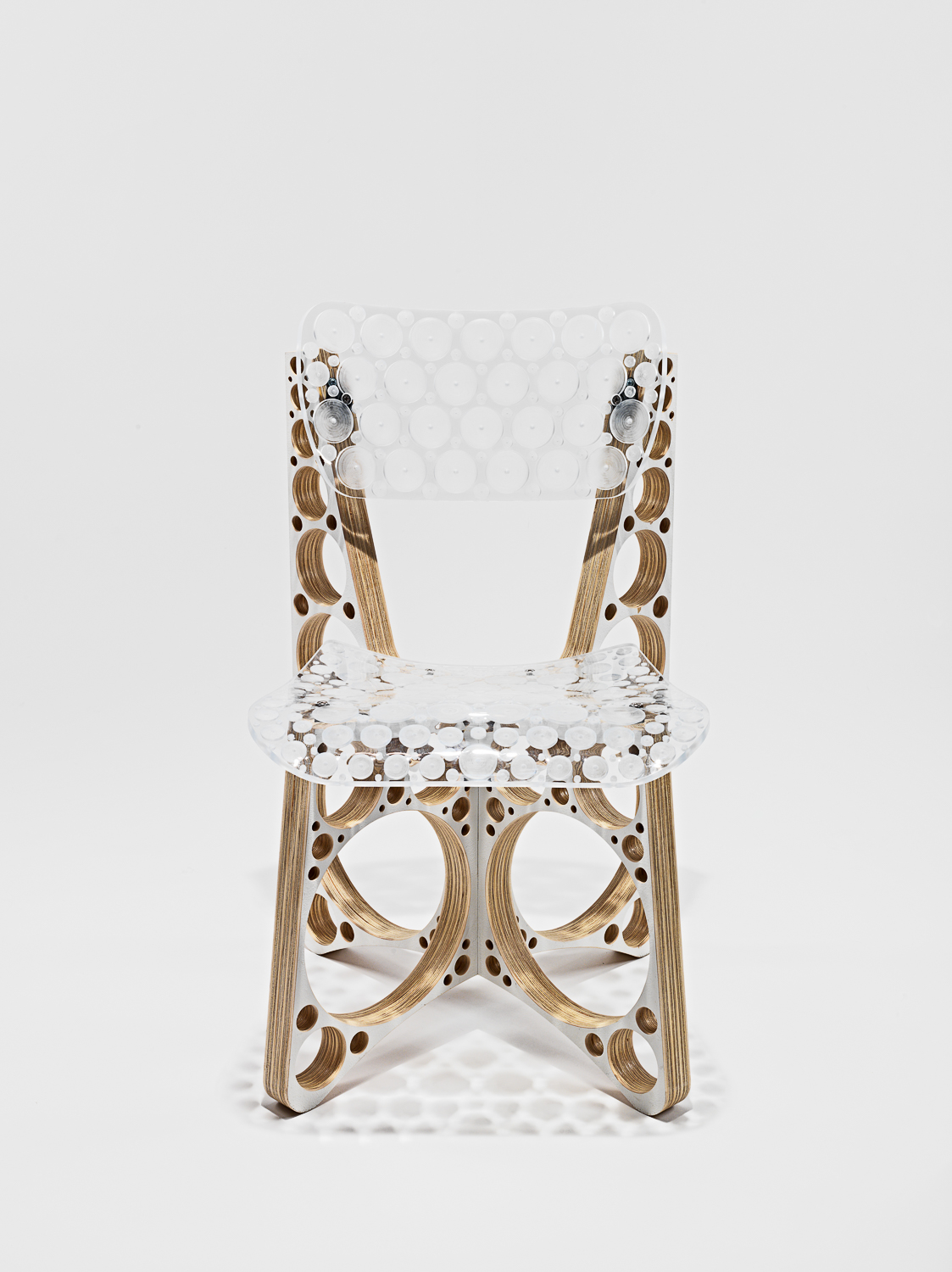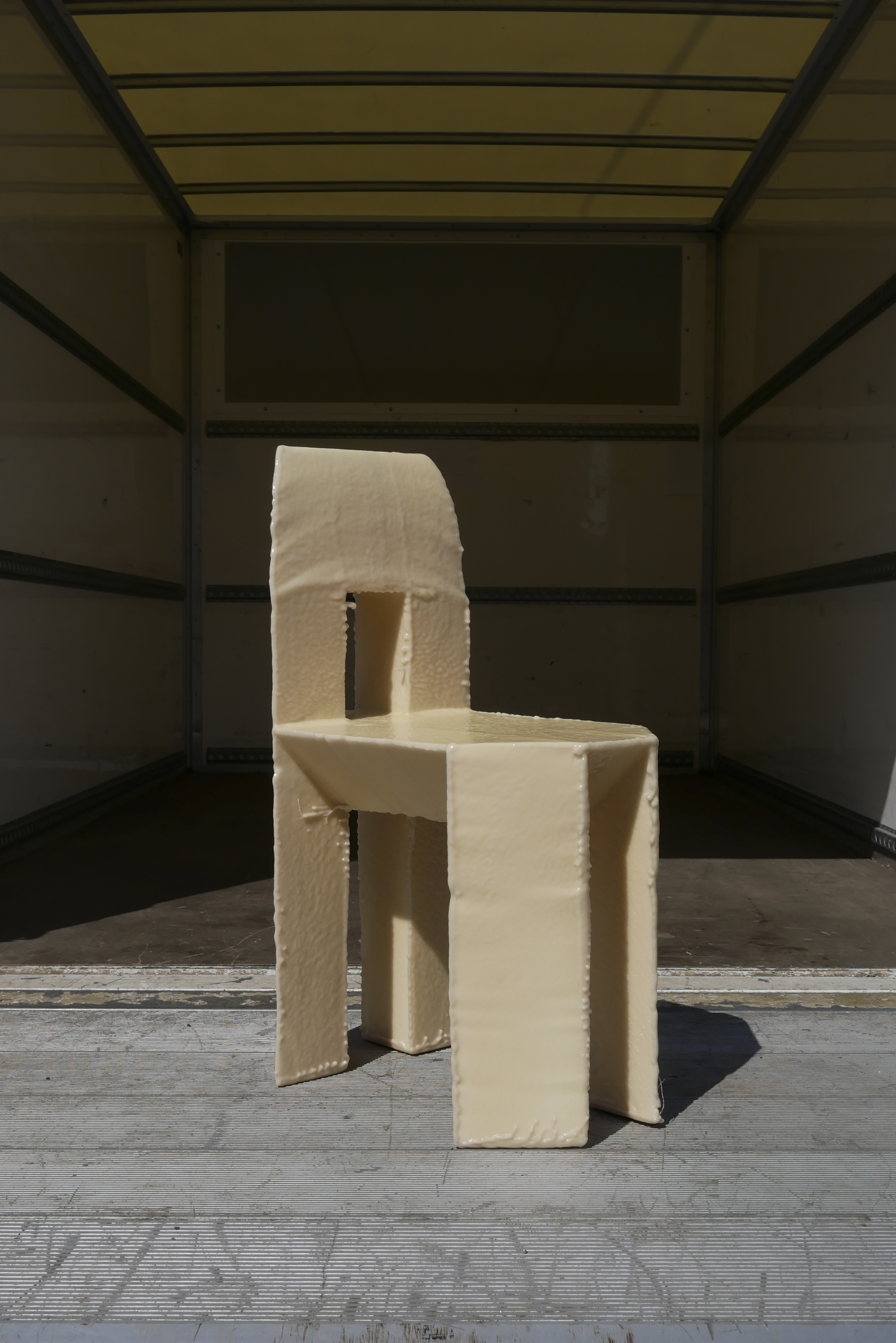Production Values
Andy Warhol famously called his art studio “the Factory,” but it was his contemporary Donald Judd who actually had his art made in one. As described in the previous section of DNA, ‘Made to Order,’ Judd was a pioneer in the outsourcing of production, having his work realized by others. In addition to radically extending the act of authorship, this move had another consequence, potentially exposing the artist to strategic questions of the kind that any manufacturer faces. When objects are “editioned” (as we now say), rather than unique, economies of scale come into play.
Nor is this only – or even primarily – a matter of money. Speed of manufacture can also be an aesthetic in its own right, as is attested by the chairs seen here by Tom Sachs and Max Lamb. Sachs’ X Chair is punctuated by milled perforations, which lighten the object’s weight without compromising its structure, and are echoed by the pattern of circles milled into the polycarbonate back and seat. These internal repetitions evoke the high-energy atmosphere of Sachs’ studio, which really is a small factory: the action of his “assembly line” is dynamically captured in the chair’s form.
Lamb’s 60 Chair is a new development of his ongoing Scrap Poly series, in which scavenged polystyrene foam is collaged into unique objects, then covered with a thin layer of rubber polymer to give it visual integrity. Here, this process has been rationalized; Lamb meticulously planned a rapid (but entirely manual) manufacturing process, cutting 540 parts from 4” foam, gluing and assembling the pieces into 60 near-identical chairs, and finally spraying on the finish, all in the course of three full days. Nothing was wasted: Lamb even used the truck that picked up the raw materials as a worksite, then delivered the finished chairs in the same vehicle. It was a performance of exaggerated efficiency from start to finish, with a point to prove: with enough experience and intelligence, one person really can compete with the assembly line. Now that’s production value.
DNA is a collaborative essay project, intertwining three gallery programs into a single, generative presentation.





